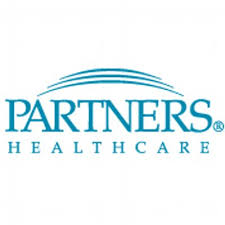OpenTable
See the following -
Changes In The Health Care System Driven By Self-Service And DIY Health
Health care is migrating from the bricks-and-mortar doctor’s office or care clinic to the person him or herself at home and on-the-go–where people live, work, play, and pray. As people take on more do-it-yourself (DIY) approaches to everyday life–investing money on financial services websites, booking airline tickets and hotel rooms online, and securing dinner reservations via OpenTable–many also ask why they can’t have more convenient access to health care, like emailing doctors and looking into lab test results in digital personal health records.
- Login to post comments
Halamka Discusses Three Disruptive Care Coordination Innovations In Use at Beth Israel
 Would you buy an iPhone if the only apps that ran on it were written by Apple? Maybe, but the functionality would not be very diverse. The same can be said of EHRs. Athena, Cerner, Epic, Meditech, and self developed EHRs such as BIDMC’s webOMR are purpose-built transaction engines for capturing data. However, it is impossible for any single vendor to provide all the innovation required by the marketplace to support new models of care I’m a strong believer in the concept of third party modules that layer on top of traditional EHRs in the same way that apps run in the iPhone ecosystem...
Would you buy an iPhone if the only apps that ran on it were written by Apple? Maybe, but the functionality would not be very diverse. The same can be said of EHRs. Athena, Cerner, Epic, Meditech, and self developed EHRs such as BIDMC’s webOMR are purpose-built transaction engines for capturing data. However, it is impossible for any single vendor to provide all the innovation required by the marketplace to support new models of care I’m a strong believer in the concept of third party modules that layer on top of traditional EHRs in the same way that apps run in the iPhone ecosystem...
- Login to post comments
New $1.2b Partners Epic System a Prescription for Frustration
 The demands of the new system are so taxing and time-consuming, Lydon said, that the computer has come between her and her patients.More than once, Lydon says, she has burst into tears on the drive home. “I know people throughout the hospital, and they find the same thing: it’s tedious, labor intensive, and you feel like you can’t do what you want to do,” said Lydon, a nurse for more than 30 years...
The demands of the new system are so taxing and time-consuming, Lydon said, that the computer has come between her and her patients.More than once, Lydon says, she has burst into tears on the drive home. “I know people throughout the hospital, and they find the same thing: it’s tedious, labor intensive, and you feel like you can’t do what you want to do,” said Lydon, a nurse for more than 30 years...
- Login to post comments
Today's Patient Portals CAN NOT Capture Network Value (Part 2)
 Today’s patient portals are a mess. The catchphrase “Your mom has 7 portals for 7 providers” sums up patients’ frustrations and the resulting tepid utilization of portals. Today’s portals CAN NOT capture network value. The first post in this series introduced the platform terminology of single-homing vs. multihoming. Patients strongly would prefer to have as few portals as possible — ideally one, i.e., a single “home”. However, patients are forced to subscribe to multiple homes since today’s portals are tethered to individual institutions or care providers. In this post, we’ll introduce the platform terminology of stand-alone vs. network value. Today’s patient portals can provide some stand-alone value, but they provide minimal network value.
Today’s patient portals are a mess. The catchphrase “Your mom has 7 portals for 7 providers” sums up patients’ frustrations and the resulting tepid utilization of portals. Today’s portals CAN NOT capture network value. The first post in this series introduced the platform terminology of single-homing vs. multihoming. Patients strongly would prefer to have as few portals as possible — ideally one, i.e., a single “home”. However, patients are forced to subscribe to multiple homes since today’s portals are tethered to individual institutions or care providers. In this post, we’ll introduce the platform terminology of stand-alone vs. network value. Today’s patient portals can provide some stand-alone value, but they provide minimal network value.
- Login to post comments